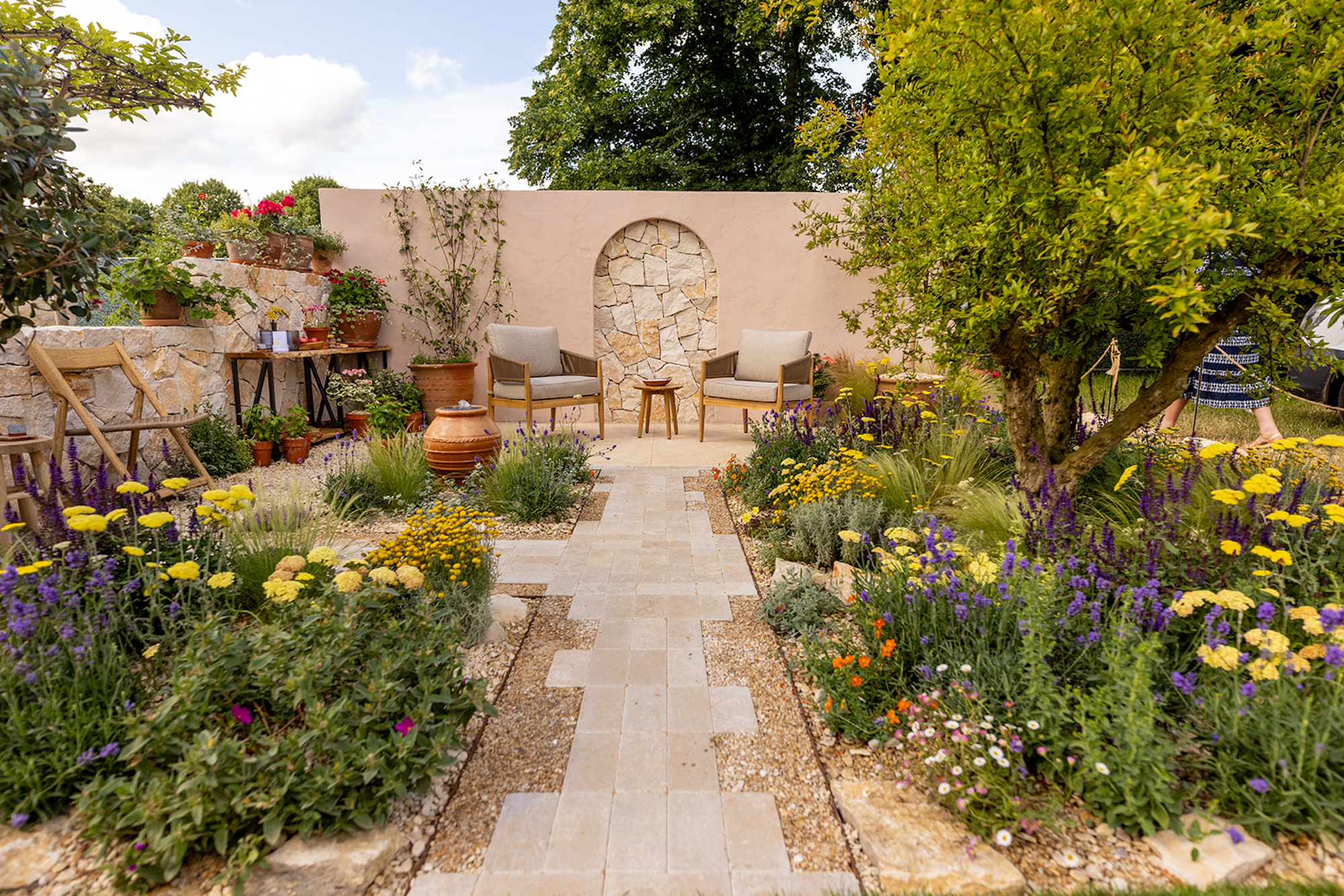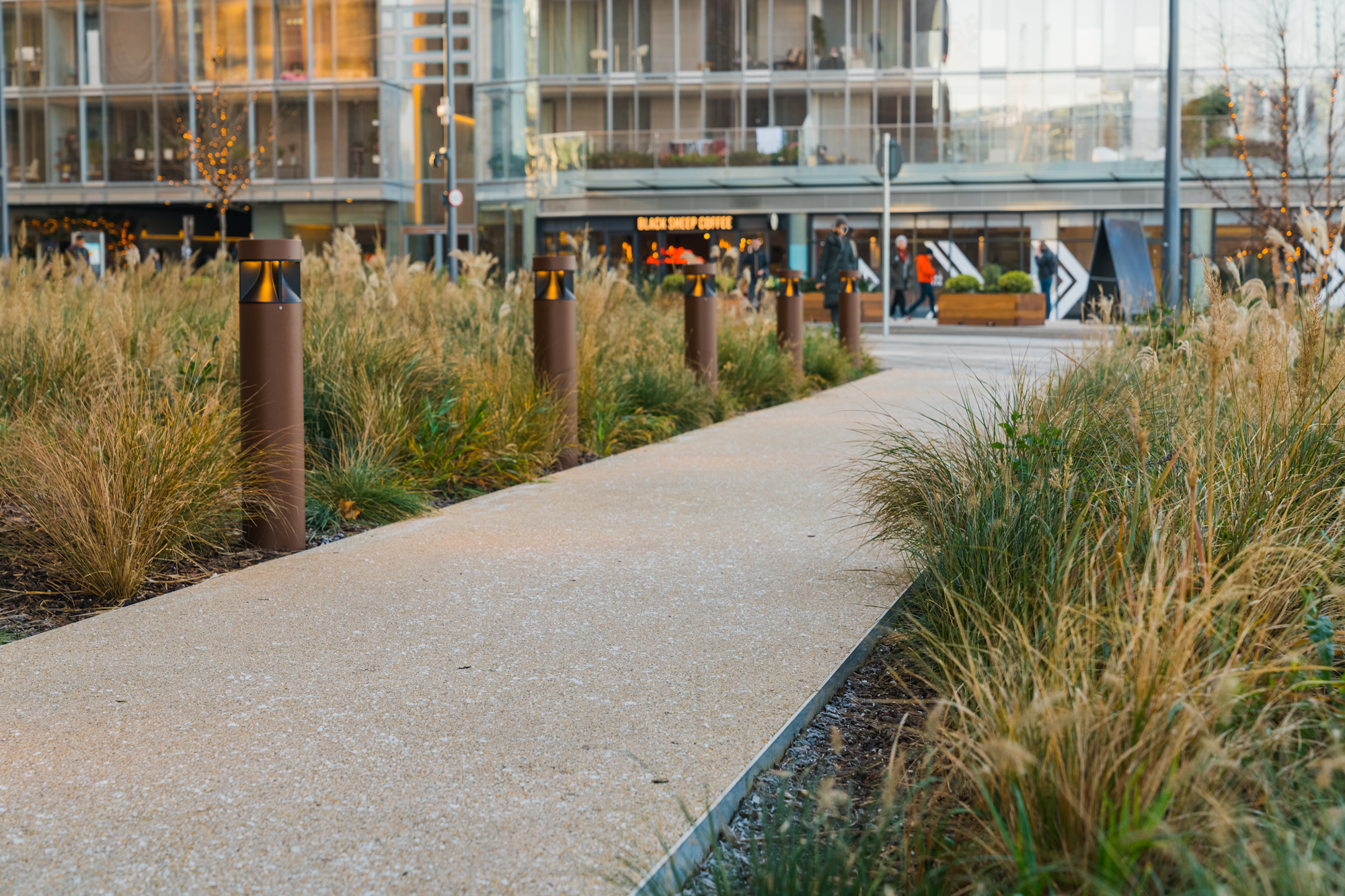
Using metal edging to create modern garden shapes and patterns

Clean lines, defined spaces and contemporary aesthetics are more sought after than ever in garden design. One of the most effective, and often overlooked, ways to achieve this modern look is through metal edging.
In this blog we will explore how metal edging can transform your outdoor space, from its ability to define garden zones to the sleek, architectural character it adds. We will discuss the different types of metal and share some design ideas that can make a striking statement.
If you are aiming for a garden that is minimalist, organised and unmistakeably modern, metal edging might be the design tool you’ve been missing.
What is metal edging? A modern solution for stylish gardens
Metal edging is a sleek, durable landscaping tool used to create clean, defined boundaries in gardens and outdoor spaces. Unlike traditional materials like wood or plastic, metal offers a contemporary aesthetic that complements both modern and classic garden designs.
In garden design, metal edging serves both practical and visual purposes:
- It keeps soil, gravel, mulch and lawn areas neatly separated.
- It prevents overgrowth.
- It can help reduce overall garden maintenance.
- It enhances the overall look of your landscape with crisp lines.
- It provides structure to your landscape.
Whether you are creating curved flower beds, defining a pathway or outlining a lawn, metal edging is a modern solution that brings long-lasting style and function to any outdoor space.

How metal edging defines spaces and adds architectural interest
Metal edging is more than just a boundary, it is a design element that brings order, clarity and sophistication to your landscape. By cleanly separating different areas such as:
- Lawns from garden beds
- Gravel paths from planting zones
- Patio spaces from natural terrain
Metal edging can give your outdoor space a polished, intentional look.
Its slim, minimalist profile makes it ideal for highlighting shapes and guiding the eye through your garden. Whether you are framing curved flower beds or outlining straight, modern lines, metal edging introduces a subtle architectural interest that complements both structured and organic designs.
The material itself can become a feature as well:
- Options like weathered corten steel develop a rich, rusted patina over time, adding texture and warmth.
- Powder-coated finishes in black, grey or custom colours offer a contemporary edge that ties in with modern hardscaping, outdoor furniture and home exteriors.
By defining edges with precision and style, metal edging transforms outdoor areas into cohesive, well-designed spaces that feel both functional and architecturally designed.
Key benefits of metal edging in modern garden design
Metal edging offers several benefits for modern garden design, including:
- Durability: Metal edging is highly resistant to weather, impact and general wear. Unlike wood or plastic edging, it won’t rot, crack or warp.
- Low maintenance: It requires minimal maintenance once installed. It doesn’t need regular sealing or painting. Its durability ensures it won’t need frequent repairs or replacements.
- Modern aesthetic: Metal edging provides a clean, modern look to gardens. It can enhance the visual appeal of the landscape.
- Versatility: Compared to other materials, metal edging is highly versatile. It can be shaped and bent to create straight and curved lines. This makes it suitable for a variety of garden styles and layouts.
- Improved drainage: Metal edging systems create clear boundaries, which can improve drainage by directing water flow and preventing waterlogging.

Choosing the right metal: Types of edging materials and their uses
When selecting metal edging, it is important to choose the right material for your garden’s needs and aesthetic. Two of the most popular options include:
- Steel: Strong and durable, steel edging, such as Bison, is ideal for heavy-duty use. Raw or galvanised steel offers a clean, industrial look while corten steel develops a beautiful rust-like patina over time. This is perfect for gardens with a natural or rustic feel.
- Aluminium: Lightweight and resistant to rust, aluminium edging, such as AluExcel, is easy to work with and ideal for curves and intricate shapes. Its sleek appearance fits well with minimalist or modern landscapes.
Each metal has its strengths, so consider your climate, desired style and project complexity before deciding.
Creative shapes and patterns you can achieve with metal edging
Landscape edging isn’t just for straight lines. Its flexibility allows you to create elegant curves, geometric patterns and even custom shapes that enhance your garden’s design. Here are some ideas:
- Wavy borders for a soft, flowing look around flower beds.
- Sharp angles and grids for modern, architectural gardens.
- Spiral paths for sensory gardens.
- Tiered or raised edging to create levels or boundaries on sloped terrain.
Metal’s beauty lies in its flexibility and versatility. It offers freedom to bring your vision to life.

Modern garden design inspirations using metal edging
Looking for design inspiration? Here are a few modern garden concepts that use metal edging to stunning effect:
- Urban courtyards: Narrow steel strips outline gravel paths and raised planters, offering structure without visual clutter.
- Minimalist lawns: Sleek black powder-coated edging creates crisp lines between lawn, decking, and planting beds.
- Desert-inspired gardens: Steel edging blends beautifully with dry landscapes, adding a warm contrast to rocks and succulents.
- Industrial spaces: Raw, weathered steel edging brings an industrial aesthetic to urban gardens. This echoes warehouse materials while naturally aging to a rich rust patina that complements concrete and brick. A great source of inspiration for industrial landscaping is our project with Battersea Power Station.
- Scandinavian simplicity: Light aluminium edging frames soft green grass and white pebbles, creating a serene, modern oasis.
No matter your style, metal edging can elevate your garden into something striking and timeless.
Installation tips for complex garden shapes and patterns
Installing edging in intricate shapes requires planning and the right approach. Here are a few tips:
- Pre-plan your layout: Use a hose or string to map out curves and angles before installation.
- Use flexible edging: Choose aluminium for tight curves.
- Anchor securely: Use sturdy stakes or pins at regular intervals, especially around curves or slopes.
- Cut carefully: Use appropriate tools for precise cuts when shaping corners or custom patterns.
- Allow for expansion: Leave small gaps between lengths of metal to accommodate temperature changes and prevent buckling.
Taking the time to install it properly ensures both aesthetic precision and long-lasting performance.

Why metal edging is ideal for modern gardens
Modern garden design thrives on clarity, structure, and minimalism, qualities that metal edging delivers effortlessly. It provides:
- Clean lines that enhance geometric layouts
- Low maintenance durability that withstands time and weather
- Versatile styling for everything from contemporary to rustic themes
- Seamless integration with stone, concrete, gravel, turf, and other materials
Whether you're designing a serene backyard escape or a bold architectural landscape, metal edging is the smart, stylish choice to bring your vision to life.
At Kinley, we believe great design starts with the details. Our high-quality metal edging solutions bring clean lines, precision, and structure to modern garden spaces.
Whether you’re shaping gentle curves or creating bold geometric patterns, metal edging is a simple yet powerful tool to elevate your landscape.
Explore our full range of edging solutions or contact our experts today to get started on your project.
